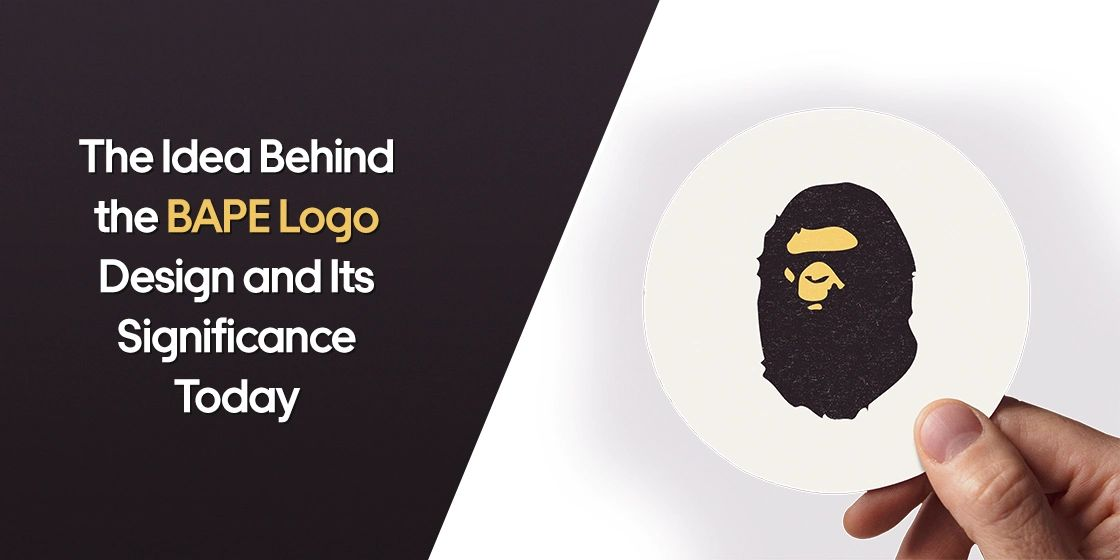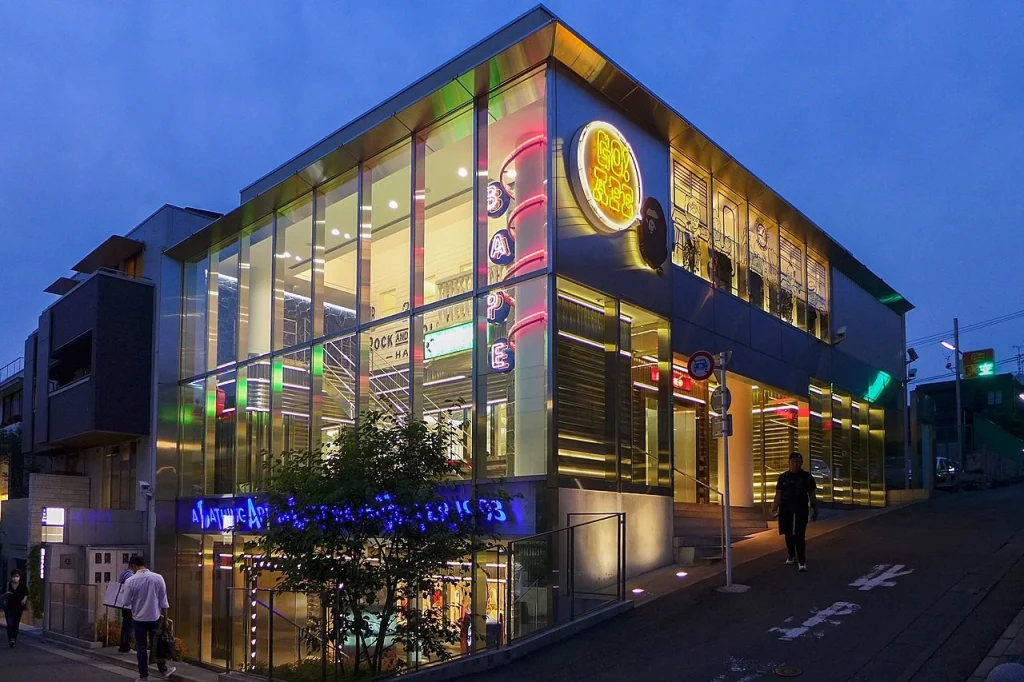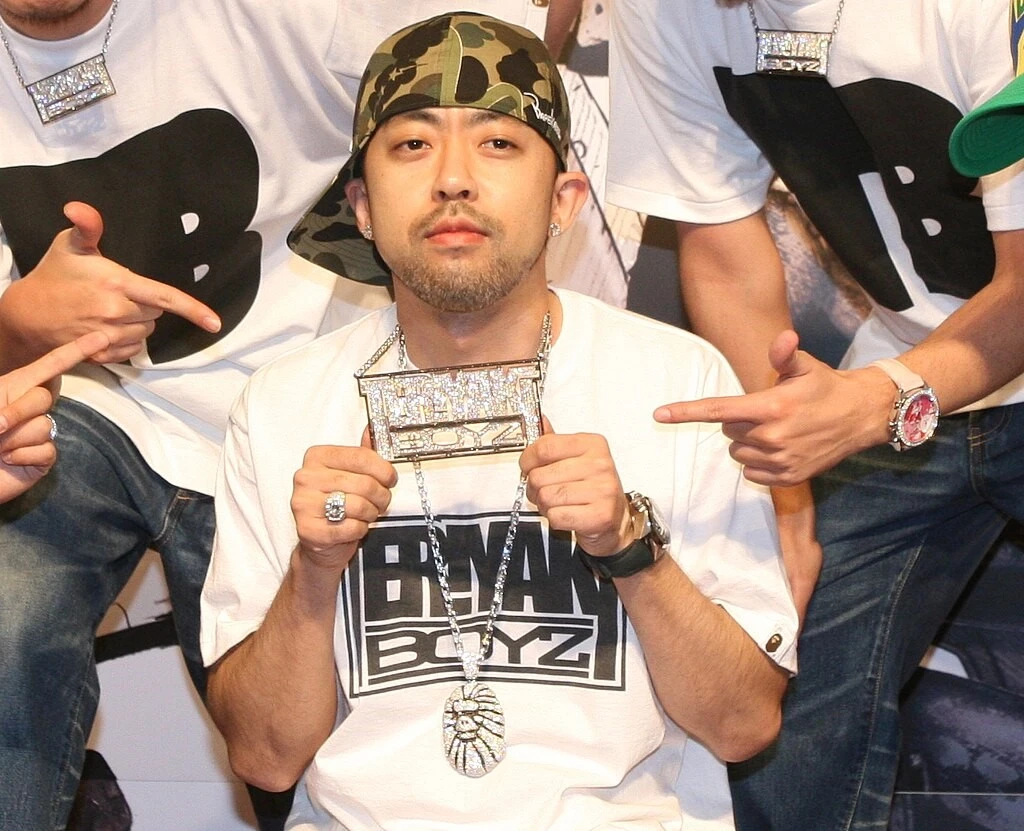
Table of Content
Discover the Ideation Behind the Inception of the BAPE Logo
The Bathing Ape (BAPE) logo, a distinctive and instantly recognizable graphic of an ape’s head, has transcended its origins as a streetwear emblem to become a globally recognized symbol of urban culture, exclusivity, and a certain rebellious cool.
More than just a brand identifier, the ape head embodies the ethos of the BAPE brand, reflecting its playful yet subversive nature, its connection to Japanese street style, and its enduring appeal to a discerning and often trend-setting consumer base. Understanding the genesis of this iconic logo and the layers of meaning it has accumulated over the years provides a fascinating insight into the power of visual branding and its role in shaping a brand’s identity and cultural impact.
From its humble beginnings in the Harajuku district of Tokyo in the early 1990s, BAPE has cultivated a unique and influential presence in the fashion world. The ape head logo, often appearing in various iterations and colorways, has been central to this success, adorning everything from coveted apparel and footwear to lifestyle goods and collaborative projects.
Its seemingly simple design shows a deeper connection to the brand’s name, its founder’s artistic vision, and the cultural context in which it emerged, all brought to life by a creative logo design agency. In this article, we will dive into the history of the BAPE brand logo, exploring its origins, the creative mind behind its creation, and the significance it holds in the contemporary streetwear landscape.
Let’s begin.
The Bathing Ape Logo – History of the BAPE Brand

The story of A Bathing Ape (BAPE) begins in Ura-Harajuku, Tokyo, in 1993, founded by Nigo (Tomoaki Nagao). Nigo, a visionary with a deep appreciation for American hip-hop culture and vintage fashion, sought to create a streetwear brand that was both exclusive and reflective of his unique aesthetic.
The name “A Bathing Ape in Lukewarm Water” is a somewhat satirical reference to the Japanese saying about pampered people taking long, lukewarm baths, a subtle commentary on the perceived indolence of affluent youth. This underlying playful irony would become a hallmark of the brand’s identity, reflected not only in its name but also in its designs and marketing strategies.
Initially, BAPE produced limited quantities of its clothing, creating an air of exclusivity and driving demand through scarcity. This strategy, coupled with Nigo’s keen eye for design and collaborations with influential figures in music and art, quickly propelled BAPE to cult status within the Harajuku streetwear scene, pushing its symbol into the realm of iconic fashion emblem logos.
The brand’s early offerings, including its now-iconic camouflage patterns, bold graphics, and high-quality construction, resonated with a generation seeking unique and expressive clothing. As BAPE’s popularity grew within Japan, it began to attract international attention, becoming a coveted brand among streetwear enthusiasts worldwide.
Evolution of the Brand into a Worldwide Phenomenon
Over the years, BAPE expanded its product line to include a wide range of apparel, footwear (most notably its BAPESTA sneakers), accessories, and even lifestyle goods. The brand also established its own retail stores, often designed with distinctive and eye-catching aesthetics, further solidifying its unique identity and BAPE’s rise to success.
Collaborations with renowned artists, designers, and brands across various industries have been a consistent element of BAPE’s strategy, further amplifying its cultural relevance and broadening its appeal. Despite changes in ownership and the evolving fashion landscape, BAPE has managed to maintain its status as a highly influential and sought-after streetwear brand, with its logo remaining a central and instantly recognizable symbol of its enduring legacy.
Understanding the BAPE Logo – Where Does the Image Supposedly Come From?

The instantly recognizable ape head logo of A Bathing Ape is widely believed to be inspired by the character Planet of the Apes. Nigo, the founder of BAPE, has openly expressed his admiration for the iconic science fiction film franchise. The 1968 original film, in particular, with its powerful imagery of intelligent apes and its themes of societal inversion, is considered a significant influence on the brand’s aesthetic and its ape motif.
The specific design of the BAPE ape head is a stylized and cartoonish representation, distinct from the more realistic depictions in the “Planet of the Apes” films, but the connection to the franchise’s central figure is strongly implied and widely accepted.
The choice of an ape as the brand’s central visual identity aligns with the playful yet slightly subversive nature of the BAPE brand. Apes, often seen as intelligent and possessing human-like qualities, can be interpreted in various ways, reflecting the brand’s multifaceted appeal. The cartoonish rendering of the ape head adds a layer of approachability and fun, preventing the logo from appearing too serious or intimidating. And it still allows it to be counted among the top luxury fashion brand logos in modern streetwear today.
Furthermore, the “Planet of the Apes” connection resonates with the brand’s name, “A Bathing Ape in Lukewarm Water,” which, as mentioned earlier, carries a satirical undertone about complacency. The idea of apes, a species that ultimately rises to dominance in the film series, being in a state of leisurely indulgence creates a subtle irony that is mirrored in the brand’s overall aesthetic.
The BAPE logo with its ape head, therefore, serves as a visual anchor for the brand’s name and its underlying playful commentary on contemporary culture. The enduring popularity of the “Planet of the Apes” franchise also contributes to the logo’s recognizability and its ability to resonate with a broad audience, even those who may not be deeply familiar with the BAPE brand’s origins.
The Idea Behind the Creation of Imagery for the BAPE Logo – Who Created It?

Shinichiro Miki, also known as Sk8thing, designed the iconic ape head BAPE logo. Miki is a highly influential graphic designer and artist who played a crucial role in shaping the visual identity of the Ura-Harajuku streetwear scene in the 1990s. He collaborated closely with Nigo in the early days of BAPE, contributing significantly to the brand’s unique aesthetic through his distinctive graphic designs. Sk8thing is also known for his work with other prominent Japanese streetwear brands, further solidifying his legacy as a key figure in the movement.
Its bold lines, simplified features, and instantly recognizable silhouette characterize Sk8thing’s design for the BAPE logo. The cartoonish yet slightly mischievous expression of the ape-head mascot logo design has become a hallmark of the brand’s visual language. His artistic style, often incorporating elements of pop culture and a distinct Japanese sensibility, perfectly complemented Nigo’s vision for BAPE.
The specific inspiration Sk8thing drew upon, beyond the general influence of “Planet of the Apes,” likely involved a process of stylization and simplification to create a memorable and versatile graphic. The clean lines and bold shapes make the logo easily adaptable for various applications, from intricate embroidery on clothing to large-scale prints and digital representations.
The enduring appeal of the BAPE logo is thus a testament to Sk8thing’s ability to capture the essence of the brand in a single, powerful image.
FAQs
| What does the BAPE logo mean? It is a play on the famous Japanese idiom “a bathing ape in lukewarm water.” |
| Why is BAPE so expensive? BAPE relies on the exclusivity factor in fashion, which is why its clothes are sold at such high markups. |
| Is BAPE a luxury brand? Its exclusivity and high price does give BAPE a luxury vibe in streetwear. |
Conclusion
The A Bathing Ape logo, a seemingly simple depiction of an ape’s head, is a powerful symbol that encapsulates the essence of the BAPE brand. Its widely accepted inspiration from the “Planet of the Apes” franchise aligns with the brand’s playful yet subversive nature and its connection to popular culture. The distinctive and memorable design, brought to life by the talented graphic artist Sk8thing, has become a cornerstone of BAPE’s visual identity, adorning its coveted products and contributing significantly to its global recognition. The ape head logo transcends its function as a mere brand identifier, representing a cultural phenomenon, a symbol of exclusivity, and a nod to the influential streetwear movement that originated in the Ura-Harajuku district of Tokyo. Its enduring significance today is a testament to the power of strong visual branding and its ability to shape a brand’s legacy and cultural impact across generations.

Logopoppin
Logopoppin is a graphic design agency that specializes in logo designing, web development, video production and advanced branding services. We love to innovate businesses with new age technologies, allowing them to improve their visual reputation.



